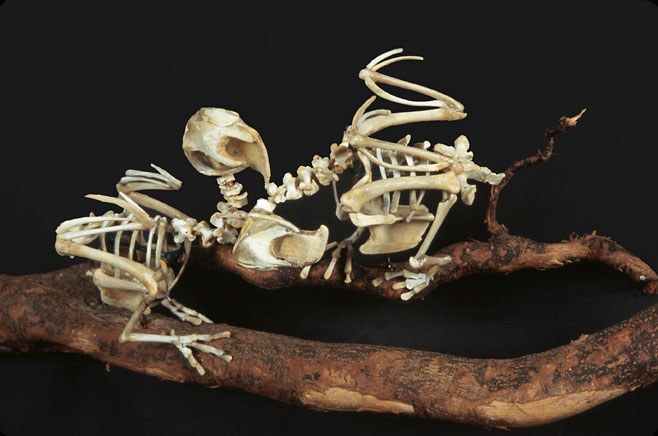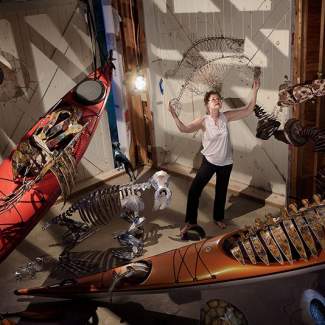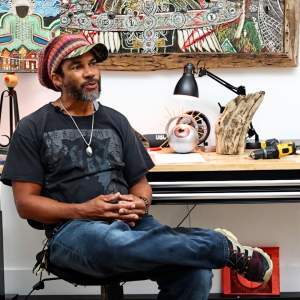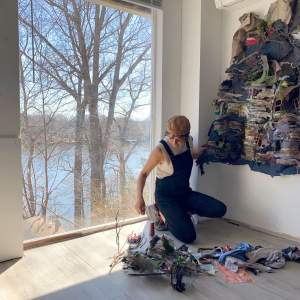Creating a Living Legacy: Christy Rupp
Christy Rupp

Can you share what has changed for you as a result of being a part of the CALL program?
Everything in the studio environment – tools, materials, information, and objects of study gets scrutinized. Now I notice it more and question if it advances clarity or contributes to clutter. I am working on recognizing obstructions that create distraction. If you can see it, then the solution is clearer; if you choose not to see it, that’s a decision as well. Having a legacy specialist to brainstorm with is enormously helpful in escaping the quicksand of history.
Can you give us a sense of what needed to be accomplished when you started working with the CALL program?
As a conceptual artist studying environmental data, I have always spent a lot of time doing research, collecting data as a way to synthesize information. The images remain as visual representation, but all that research and accompanying motivation becomes dense and compacted. As time moves along and you make more work, your head gets filled with a lifetime of information. The context of the times is always shifting as well. So the opportunity to revisit it non-judgmentally and put it in order is really helpful. It illuminates the threads that have been present all along.
What has been the most rewarding aspect of this work?
While thinking about streamlining studio storage, and recovering lost titles, dimensions and dates, new ideas present themselves for future work. A pattern of scrubbing off the dust reveals interests that have been steeping but not examined. We are all different people from who we were decades ago, and things that were hard to tackle in the past have arrows pointing to their doorways now.
What has been most difficult?
Reviewing the artwork from over 40 years of practice makes it apparent that today’s climate is very different: the intentions that nurtured the work may be relevant, but the context of that expression is altered. Images alone don’t tell the story; I still feel like I’m drowning in content and intention. Because of that, my search continues for a way to make information relevant in the context of today’s revisionist appetites.
What do you recommend to artists who might be in the early stages of creating an inventorying system?
Sometimes work develops over an extended period and it’s hard to pinpoint exactly where its located in ones files. Maybe there needs to be parallel inventories for dates and intentions. Additionally, many works that were donated to benefits never got documented with the purchasers; often those works are dispersed to institutions that sometimes are in touch, but not always. The best document tool I’ve found are gallery checklists; I really wish I had saved more of those from my early shows. Also, with the number of group shows over the years, I wish there were more installation photos for context. Recalling my friends’ evolution is as relevant as ever.




